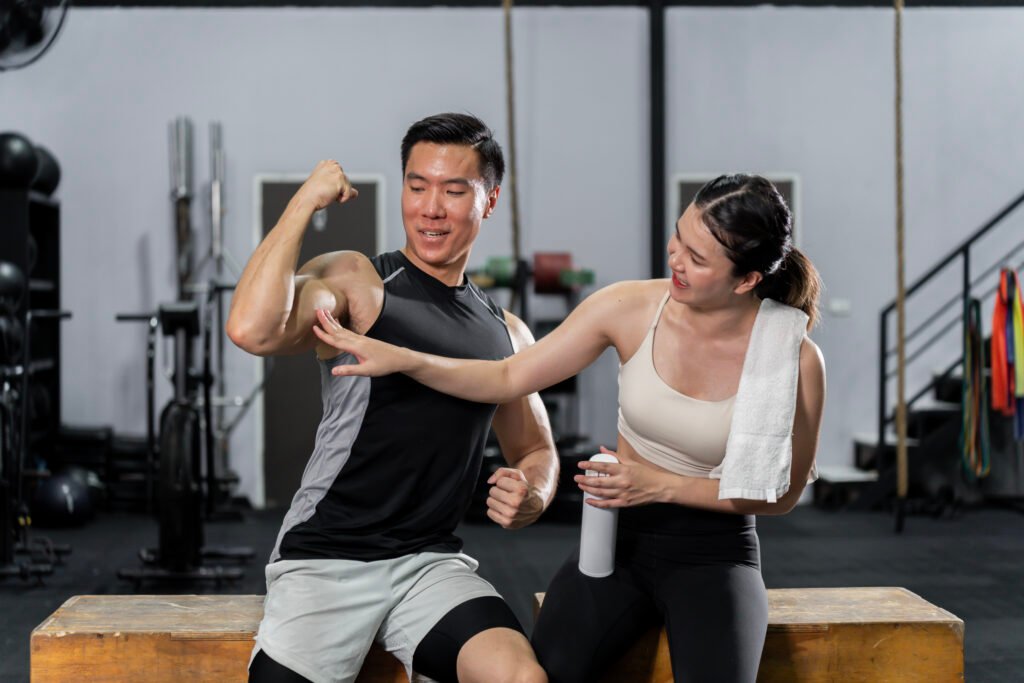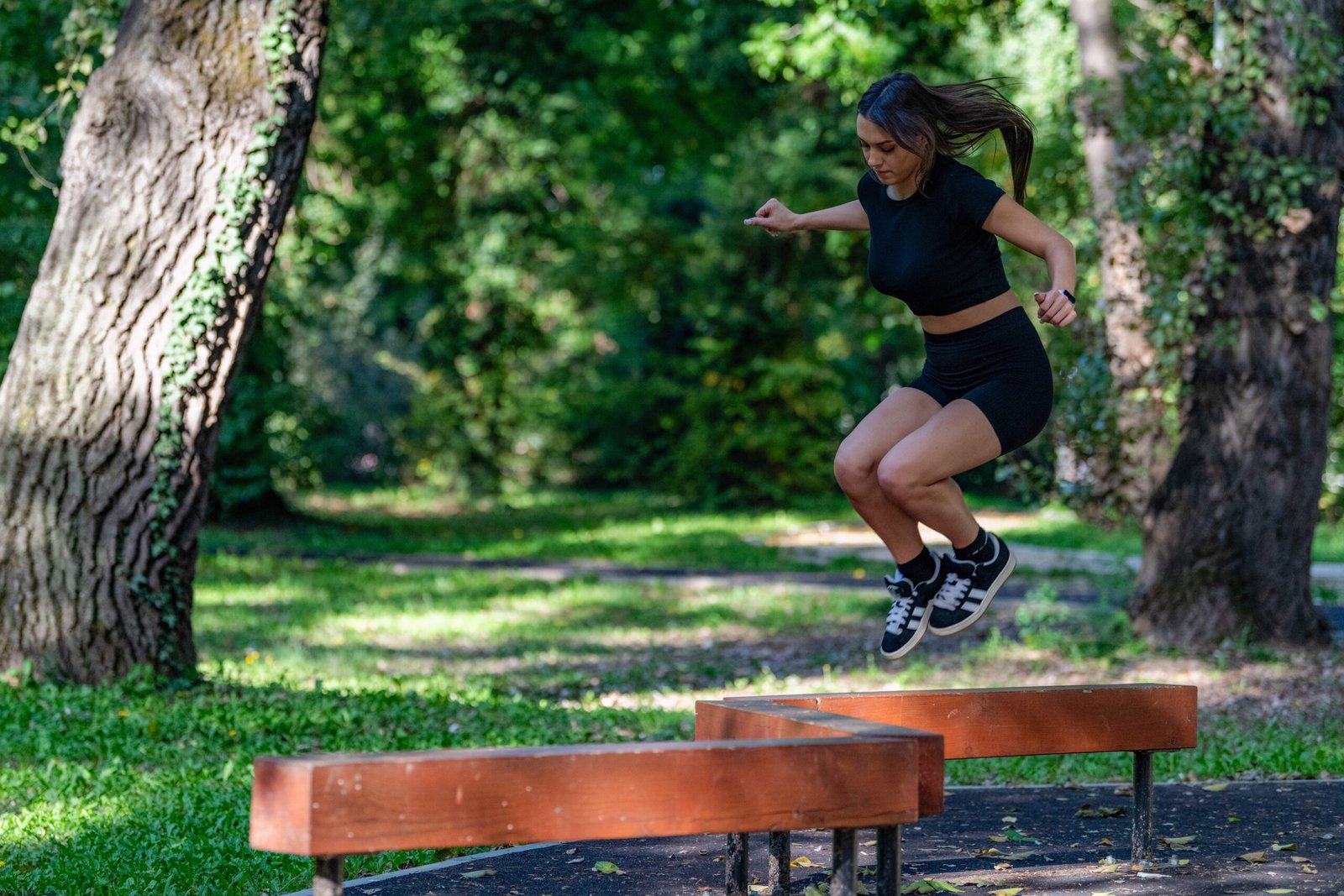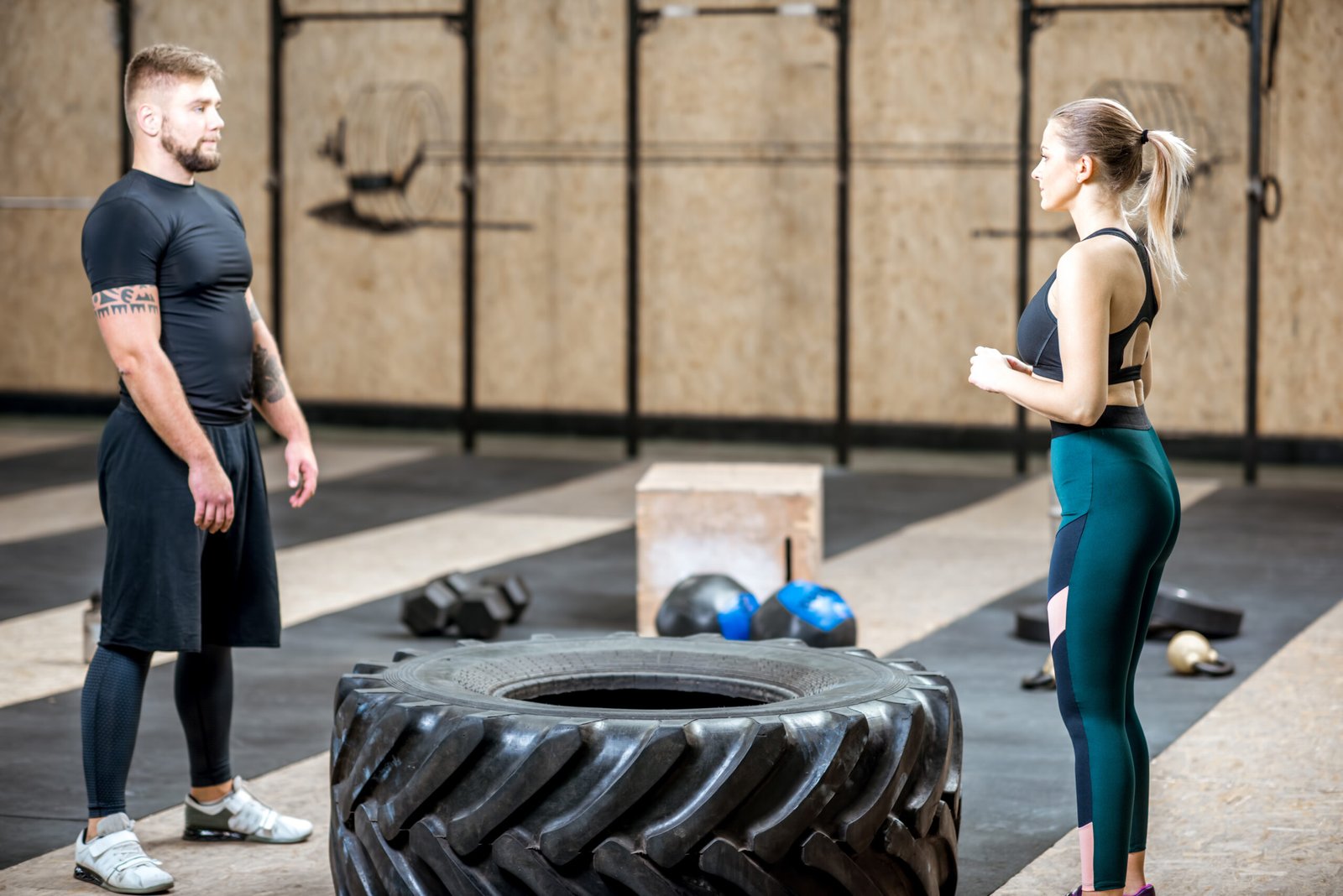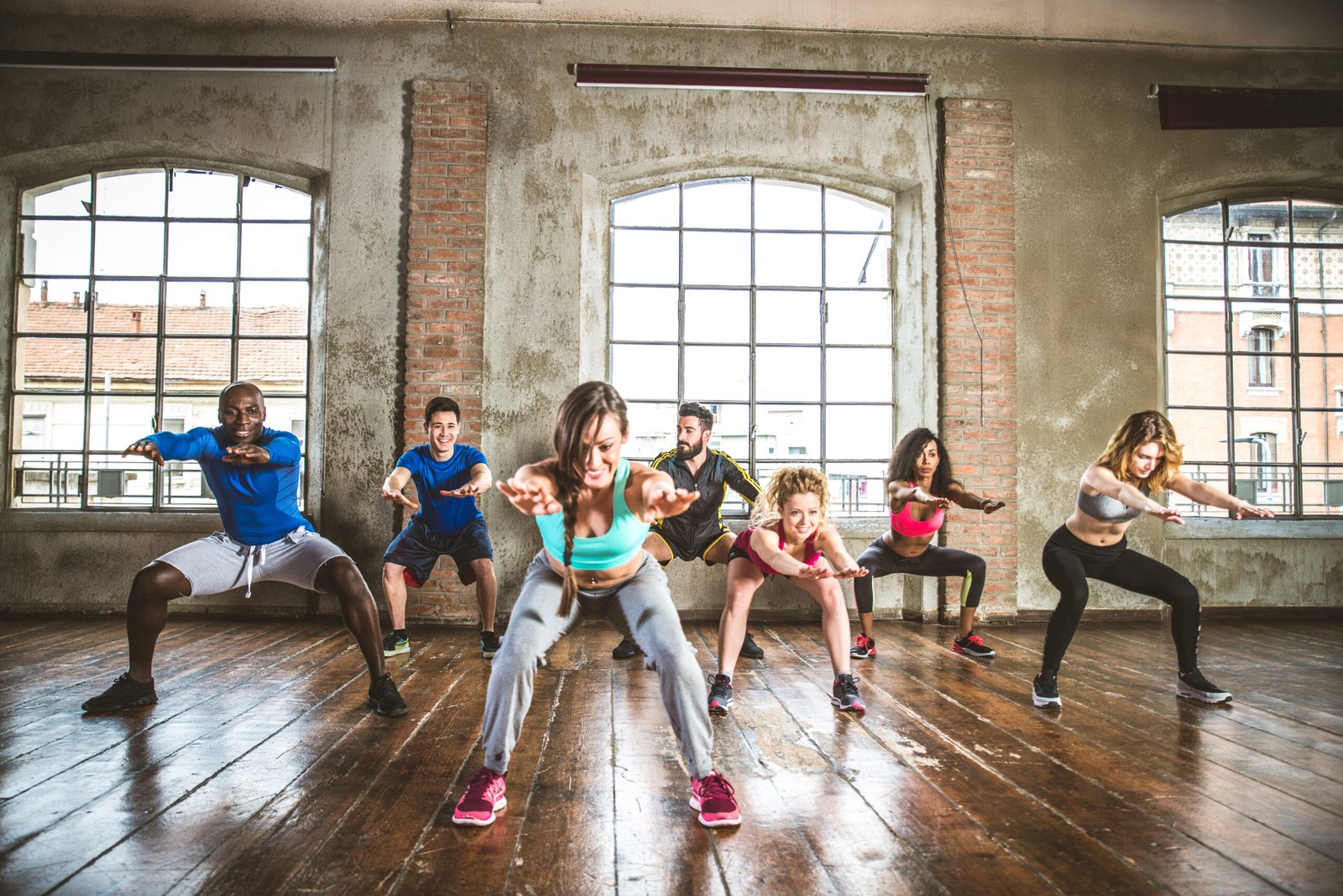In today’s world, the importance of self-defense and strength training cannot be overstated. With the right skills and strategies, you can transform your life by building an unstoppable sense of confidence. Whether you’re an experienced martial artist or a complete beginner, integrating these essential techniques into your daily routine will empower you both physically and mentally. By combining effective self-defense skills with empowering strength training strategies, you pave the way for a more secure and confident future.
Strength Training For Self-Defense and Martial Arts
| Benefit | Description | Impact on Self-Defense |
|---|---|---|
| Enhances Muscle Strength | Focuses on increasing muscle mass, which helps execute powerful strikes and holds. | More forceful and effective strikes in self-defense situations. |
| Reinforces Connective Tissues | Strengthening ligaments and tendons to improve joint stability. | Reduced injury risk during confrontations. |
| Improves Stamina | Increases cardiovascular and muscular endurance for prolonged activity. | Helps maintain high performance during extended engagements. |
| Builds Confidence & Mental Toughness | Regular strength training boosts psychological resilience and self-assurance. | Increases mental fortitude in high-stress situations. |
Integrating strength training into your self-defense and martial arts routine is a game-changer that enhances not only your physical capabilities but also your overall performance. When you focus on building muscle strength, you elevate your ability to execute powerful techniques effectively during self-defense situations. A well-rounded strength training program also helps prevent injuries by fortifying ligaments and tendons, offering better protection during practice and real-life confrontations. Moreover, strength training boosts endurance, enabling you to maintain high levels of energy and focus during prolonged physical activities. Regular training cultivates mental resilience and self-confidence, allowing you to approach confrontations with greater assurance and composure.
– Enhances muscle strength for more powerful strikes and holds
– Reinforces connective tissues to minimize injury risk
– Improves stamina and energy for extended engagements
– Builds confidence and mental toughness for stressful scenarios
In short, strength training isn’t just about physical power—it’s about cultivating a mindset of confidence that permeates every aspect of your self-defense practice and everyday life.
Stronger and Safer
Delving into how strength training boosts both physical and mental resilience reveals its crucial role in creating a solid foundation for effective self-defense. Not only does it improve your physical prowess, but it also nurtures a strong mindset, which is key in unpredictable situations. By discovering key self-defense techniques, individuals are empowered to protect themselves in various circumstances, from casual confrontations to more threatening encounters. When combined with strength training, these skills foster unbeatable confidence and personal empowerment. The importance of regular practice cannot be overstated, as it refines both physical strength and defensive tactics, leading to a transformative impact on personal security and quality of life.

– Strengthens both body and mind for comprehensive defense
– Empowers with practical techniques for real-world application
– Boosts confidence through regular practice and skill refinement
– Enhances personal safety and overall well-being
Thus, by integrating self-defense techniques with strength training, you not only become stronger but safer, fully prepared to handle life’s challenges with poise.
Interests Vary
It’s important to recognize that individual interests in self-defense and strength training can differ greatly depending on personal goals and lifestyle choices. Some individuals may prioritize self-defense skills for safety and empowerment, while others might focus on strength training for fitness, aesthetics, or self-assurance. Understanding your unique motivations can significantly tailor your training experience, making it more rewarding and effective. Exploring a variety of techniques allows you to discover what truly resonates with you, leading to deeper engagement and success. Embracing this diversity enriches your journey in self-defense and strength training, making it a deeply personal and fulfilling endeavor.
– Tailors training to personal goals and interests
– Encourages exploring varied techniques for better engagement
– Prioritizes motivations, whether for defense or fitness
– Enriches the training experience through personal relevance
Ultimately, embracing varied interests in self-defense and strength training helps create a more personalized and effective framework that supports long-term success and satisfaction.
Results Also Vary
The outcomes in self-defense and strength training can vary significantly based on personal commitment and consistency. Factors such as age, fitness level, and genetic predispositions also play crucial roles in determining individual results. Customized training programs increase the chances of achieving personal goals while maximizing effectiveness. Adapting techniques regularly ensures progress and caters to evolving needs, making the practice sustainable in the long run. Setting realistic expectations is paramount for maintaining motivation and fostering a dedicated practice that can lead to substantial improvement over time.
– Recognizes variability in personal circumstances and results
– Customizes programs for focused and effective training
– Emphasizes regular adaptation to enhance progress
– Encourages realistic goal-setting for sustainable growth
By acknowledging the uniqueness of each journey, you can harness the full potential of self-defense and strength training to achieve your personal best.
Resistance Training
| Exercise Type | Purpose | Key Benefits | Self-Defense Application |
|---|---|---|---|
| Fortifies Muscles | Strengthens muscles through resistance-based exercises like push-ups, squats, and deadlifts. | Builds core muscle strength and endurance. | Improves power for strikes, holds, and defensive maneuvers. |
| Boosts Coordination | Improves body control through exercises like kettlebell swings and resistance bands. | Enhances movement precision and agility. | Refines technique execution in dynamic scenarios. |
| Improves Mental Clarity | Increases focus through mindful movements and controlled breathing techniques. | Boosts cognitive function and stress management. | Helps make quick, clear decisions during high-pressure situations. |
| Cultivates Resilience | Develops physical and mental endurance by consistently challenging limits. | Builds long-term stamina and mental toughness. | Enables you to withstand fatigue during extended confrontations. |
Resistance training, a pivotal component in enhancing muscle strength and endurance, provides a robust foundation for self-defense capabilities. Incorporating regular resistance exercises into your routine boosts physical confidence, which is crucial for maintaining an effective self-defense mindset. Additionally, it improves overall agility, coordination, and balance—key elements in executing self-defense techniques with precision and effectiveness. Resistance training contributes to stress reduction and mental clarity, essential for making quick, informed decisions in crucial moments. Consistently practicing these exercises builds resilience, empowering you to face potential threats with greater control and assurance.
– Fortifies muscles for enhanced defense mechanisms
– Boosts coordination and agility for better technique execution
– Bolsters mental clarity and stress management
– Cultivates resilience and assurance for real-world scenarios
In incorporating resistance training, you arm yourself with the physical and mental tools necessary for confident self-defense.
Overload and Development
| Principle | Description | Benefits in Self-Defense | Recommended Training Strategy |
|---|---|---|---|
| Intensity and Rest Balance | Alternating between high-intensity exercises and adequate rest periods. | Prevents burnout, ensures optimal strength gains. | Focus on progressive overload with sufficient recovery. |
| Progressive Overload | Gradually increasing resistance or exercise volume over time. | Prevents training plateaus, consistently improves strength. | Increase weights or reps each week to continue challenging muscles. |
| Mental Toughness | Pushing through challenging sets to build endurance and resilience. | Strengthens the mind to overcome obstacles in self-defense. | Engage in high-intensity interval training (HIIT) for mental resilience. |
| Customized Levels | Tailoring intensity to the individual’s current physical capabilities to avoid injury. | Ensures safe, sustainable muscle growth while reducing injury risks. | Use a variety of intensity levels depending on the practitioner’s fitness. |
The principle of overload in training involves a careful balance between intensity and rest, which is crucial for muscle growth and resilience. Progressive overload, gradually increasing resistance or intensity, ensures continuous development and helps avoid training plateaus. Facing physical overload aids in building mental toughness—a critical asset in self-defense. Customizing overload levels according to individual capability supports sustainable growth without the threat of injury. Successfully managing overload instills a sense of achievement, enhancing self-esteem and leading to transformative confidence in one’s personal and defensive abilities.
– Balances intensity and recovery for optimal muscle development
– Incorporates gradual overload to sustain growth
– Fosters mental toughness and resilience
– Customizes levels to individual readiness to prevent injury
By mastering the principle of overload, you empower yourself with growth that translates to enhanced physical preparedness and personal empowerment.
Getting “Big” is a Goal for Some Not a Result for All
Achieving “bigness” in physical size through strength training is a personal goal for some and not a universal outcome. In the world of self-defense and strength training, the focus should be on building confidence, competence, and vitality, regardless of body size. Tailored training programs can enhance strength and self-defense skills without significant muscle gain if that is not your desired outcome. Emphasizing functional strength and skill development empowers individuals without the pressure of conforming to a specific body type. Encouraging personal growth through varied training goals fosters a supportive and inclusive fitness environment.
– Prioritizes functional strength over size for defense efficacy
– Tailors programs for diverse objectives and body types
– Emphasizes competence and confidence beyond physical scale
– Encourages a supportive training atmosphere
This approach ensures everyone from novices to seasoned practitioners can find their place within self-defense and strength training, focusing on personal empowerment and achievement rather than size alone.
Your Body

Understanding your body’s capabilities and limitations is crucial in self-defense, as it allows you to assess and manage potential threats effectively. Building strength through targeted training not only enhances physical power but also equips you with the confidence to defend yourself in challenging situations. Regular strength training fosters resilience, enabling quicker recovery from physical exertion or confrontations. Awareness of your body’s movement and posture goes a long way in improving reaction time and balance, which are critical in self-defense scenarios. Empowering your body with self-defense skills and strength training ultimately bolsters your overall confidence and mental fortitude.
– Enhances self-assessment of physical boundaries and capabilities
– Boosts recovery and readiness through consistent training
– Improves reaction and response via movement awareness
– Builds confidence through physical and mental empowerment
By becoming attuned to your body’s needs and strengths, you are better equipped to handle whatever life throws your way.
Dynamic Flexibility
Dynamic flexibility significantly enhances your range of motion, an essential aspect of effective self-defense maneuvers and strength training exercises. It involves active movements designed to prepare your muscles for the physical demands faced in both self-defense situations and workout routines. Incorporating dynamic flexibility exercises into your regimen helps prevent injuries and keeps you prepared for unexpected challenges. Regular practice leads to improved muscular coordination and overall agility, boosting confidence in both defensive and strength training contexts. By enhancing dynamic flexibility, you support quicker recovery and increased performance during high-intensity physical activities.
– Prepares muscles for the demands of physical engagements
– Reduces injury risks through proactive stretching
– Enhances coordination and agility for better performance
– Supports recovery and efficiency in high-tempo activities
Ultimately, dynamic flexibility isn’t just a preventative measure—it’s a proactive strategy for maximizing efficacy and readiness in every physical endeavor.
Be a Better “Mover”
Developing a strong foundation of movement skills is imperative for enhancing the effectiveness of both self-defense and strength training. Focusing on flexibility and agility strengthens your ability to adapt to varied situations swiftly and confidently. Incorporating balance exercises not only increases stability but also prevents injuries during physical confrontations or workouts. Practicing coordination drills refines your ability to execute techniques efficiently, ensuring fluidity in movement and response. Continuous learning and practice are vital to ensure your movements become instinctual and reliable, making you more adept at both self-defense and fitness challenges.
– Builds movement skills for more adaptable responses
– Enhances stability and injury prevention through balance work
– Refines coordination for smoother, more effective techniques
– Encourages ongoing practice for instinctual movement development
In mastering these fundamental skills, you become a more agile and sure-footed participant in any physical or self-defensive undertaking.
Explosiveness

Explosiveness in self-defense and strength training accentuates your ability to generate rapid power, which is essential for effective technique execution. Building explosive strength involves exercises like plyometrics and Olympic lifts that focus on harnessing speed and power. Developing this aspect of your training improves reaction times and agility, providing an edge in self-defense scenarios. Consistent training geared towards explosiveness not only increases overall confidence and physical resilience but also leads to more dynamic and efficient movement patterns. This is vital for both self-protection and fitness, ensuring you possess the necessary tools for success.
– Enhances rapid power generation for effective defense
– Utilizes specific exercises to harness speed and agility
– Improves reaction times and resilience
– Cultivates dynamic, efficient movements for diverse applications
Incorporating explosiveness into your training regimen sets the stage for a more proficient and responsive approach to self-defense and personal fitness.
How to Build Explosiveness
Building explosiveness requires a focus on compound movements such as squats, deadlifts, and plyometric exercises, essential for developing overall power and speed. Incorporating dynamic workouts like medicine ball throws and kettlebell swings further enhances fast-twitch muscle fibers and explosive strength. Prioritizing proper technique and form is crucial to maximizing efficiency and preventing injury while training for explosiveness. Integrating interval training and sprints also boosts cardiovascular endurance and improves quick reaction times. Regularly tracking progress and adjusting routines ensures continuous improvement and adaptation in explosive power.
– Focuses on compound movements to develop core power
– Incorporates dynamic exercises for muscle fiber activation
– Emphasizes technique for injury-free, efficient training
– Integrates cardiovascular elements for better endurance
By systematically building explosiveness, you allow yourself to harness power that significantly benefits both defensive situations and overall physical prowess.
Cardiovascular Endurance
Cardiovascular endurance forms the foundation for building the stamina needed to sustain self-defense techniques and strength training sessions. Enhanced cardiovascular health leads to quicker reaction times, a vital component in self-defense scenarios. Better endurance allows performance of exercises with greater efficiency, enhancing the effectiveness of strength training routines. A key benefit of improved cardiovascular fitness is the faster recovery between high-intensity activities, allowing for more consistent and effective training sessions. Additionally, developing cardiovascular endurance boosts mental resilience, instilling greater confidence in both self-defense and everyday life.
– Establishes stamina for prolonged physical activity
– Strengthens heart health for quicker action responses
– Enhances workout efficacy and training outcomes
– Supports faster recovery for consistent practice
– Strengthens mental resilience and day-to-day confidence
Thus, cardiovascular endurance underpins your broader training goals, linking physical fitness with heightened personal security and confidence.
What are the Basic Self-Defense Techniques Everyone Should Know?
| Technique | Description | Purpose | Training Focus |
|---|---|---|---|
| Break Free from Grips | Techniques like the wrist escape and elbow strike help you break free from an assailant’s grasp. | Essential for self-preservation in close combat situations. | Practice techniques against both standing and ground-based holds. |
| Palm and Knee Strikes | Striking with the palm to the face and knee to the groin are effective for disabling an attacker. | Quick, effective counterattacks to escape a dangerous situation. | Focus on precision and proper form to generate maximum force. |
| Stable Stance | Maintaining a low, wide stance with strong posture allows you to maintain balance and leverage. | Helps prevent being thrown or off-balance during confrontation. | Train footwork and core strength for stability. |
| Environmental Awareness | Being aware of surroundings to prevent being surprised or caught off-guard. | Helps avoid dangerous situations and gives time to react. | Develop mindfulness during training to sharpen situational awareness. |
Understanding basic self-defense techniques can substantially increase personal safety and boost self-confidence. Essential techniques include knowing how to break free from common physical holds and grips. Learning effective strikes, such as palm and knee strikes, can significantly aid in disabling an aggressor, giving you the opportunity to escape. Maintaining a stable stance and having heightened environmental awareness are crucial elements of effective self-preservation. Individually, these skills may seem simple, but regular practice and repetition build muscle memory, enhancing reaction times and effectiveness in real-world situations.
– Breaks grips and holds to free from adversaries
– Utilizes strikes for effective, disabling counterattacks
– Maintains awareness and stance for defensive readiness
– Encourages regular practice for ingrained responses
By mastering these fundamentals, individuals empower themselves with the skills needed to protect and defend confidently.
How Often Should I Practice Strength Training to See Effective Results?
| Training Element | Frequency | Duration | Benefits | Recommendations |
|---|---|---|---|---|
| Strength Training | 2-3 times per week | 45-60 minutes per session | Builds muscle, enhances endurance, and increases power. | Focus on compound movements, mix cardio with strength. |
| Rest | 1-2 days per week | – | Essential for muscle recovery and growth. | Allow muscle groups to recover before re-engagement. |
| Intensity Variation | Every 4-6 weeks | – | Prevents plateaus, ensures progressive strength development. | Gradually increase the resistance or intensity of exercises. |
| Variety of Exercises | Weekly | 1-2 new exercises each week | Keeps muscles challenged and prevents overuse injuries. | Rotate between different muscle groups for balanced growth. |
Consistency is paramount in strength training, with a recommendation to engage in sessions at least two to three times per week for optimal results. Allow adequate rest between sessions to enable muscle recovery and growth. It’s important to gradually increase the intensity and volume of workouts to continuously challenge your muscles and stimulate development. Incorporating a mixture of exercises targeting different muscle groups promotes balanced strength and helps avoid over-specialization. Listening to your body and adjusting the training schedule as needed can prevent overtraining and reduce the risk of injury.
– Encourages regular weekly training for results
– Stresses rest for necessary recovery and growth
– Utilizes variable exercises for comprehensive strength
– Adapts intensity and volume for ongoing progression
Through a consistent schedule emphasizing varied and responsive training, individual results in strength development are not only achievable but sustainable.
Can strength training improve my self-defense skills?
When considering self-defense, one might immediately think of learning martial arts, practicing quick reflexes, or developing strategic fight maneuvers. However, an often overlooked and equally vital component of effective self-defense is strength training. Strength training can significantly improve your self-defense skills by enhancing your physical abilities, boosting confidence, and complementing other techniques you may learn in self-defense classes. Let’s delve into how strength training can bolster your capabilities in defending yourself.
Enhanced Physical Power
The core of strength training lies in building muscle power, which is directly applicable to self-defense scenarios. Having increased muscle power means you can deliver more forceful strikes and maintain a strong stance against an attacker. Whether you need to break free from a hold, deliver a punch, or execute a throw, the power generated from strong muscles can be a game-changer. It also enables you to utilize your body weight more effectively, which can amplify the impact of your defensive techniques.
Greater Endurance and Stamina
Strength training improves muscular endurance, which is critical during high-stress situations where you might need to defend yourself over a prolonged period. Training regimens typically include exercises that not only build muscle mass but also improve cardiovascular fitness. This combination ensures that you can maintain agility and strength during a confrontation, reducing the risk of fatigue and enhancing your ability to react quickly under pressure.
Improved Balance and Stability
Balance and stability are crucial for defending yourself effectively. Engaging in strength training helps in fortifying your core muscles, which play a significant role in stabilizing your entire body. A stronger core improves your balance, allowing you to remain upright and agile during confrontations. This stability ensures that you can execute defensive maneuvers precisely and sustain a strong defensive position, making it harder for an attacker to overpower you.
Boosted Confidence and Mental Resilience
Beyond physical benefits, strength training contributes to a stronger mind-body connection, often leading to increased self-assurance. As you witness tangible improvements in your strength and fitness levels, your self-confidence naturally grows. This psychological advantage is invaluable in self-defense, as confidence can deter potential threats and affect your composure during a confrontation. Understanding your physical capabilities allows you to approach challenging situations with a clear and confident mindset.
Synergy with Self-Defense Techniques
Strength training doesn’t replace learning specific self-defense techniques; instead, it complements them. Improved strength can enhance your ability to perform and execute techniques taught in martial arts or self-defense classes. When you combine well-developed physical strength with learned techniques, your overall effectiveness in a self-defense situation is significantly increased. Additionally, with enhanced physical capabilities, learning new techniques often becomes easier and faster, allowing you to adapt quickly in dynamic situations.
In conclusion, incorporating strength training into your fitness regime can substantially upgrade your self-defense skills. By improving your physical power, endurance, balance, and mental resilience, you’ll be better prepared to face potential threats and protect yourself effectively.
What equipment do I need to start self-defense training at home?
| Equipment | Description | Primary Use | Key Features to Look For |
|---|---|---|---|
| Punching Bag | A sturdy bag, either hanging or freestanding, for practicing strikes. | Develops striking power, accuracy, and coordination. | Choose durable materials (leather), appropriate weight. |
| Hand Wraps & Boxing Gloves | Protective gear for the hands and wrists during striking exercises. | Prevents injury to hands and improves strike comfort. | Ensure proper fit and padding for wrist and knuckle protection. |
| Mirror or Video Device | Tools for self-assessment during training. | Allows analysis of form, posture, and technique during practice. | Full-length mirror or a tripod with a camera for easy recording. |
| Resistance Bands | Elastic bands used for strength and flexibility exercises. | Enhances muscle endurance, mobility, and flexibility. | Adjustable resistance levels for progressive training. |
| Mats | Cushioned surfaces for safe falls and ground training. | Provides comfort and safety when practicing grappling techniques. | Look for thick, high-density mats for full-body protection. |
| Foam Rollers | Equipment used for post-training muscle recovery. | Helps relieve muscle tightness and prevent soreness. | Choose rollers with varied texture for targeted muscle groups. |
| Training DVDs/Classes | Professional instructional videos or online classes for self-defense. | Structured lessons and strategies for learning effective techniques. | Look for reputable instructors and comprehensive program options. |
| Timer/Stopwatch | Device for interval-based training. | Used for timing rounds during HIIT or other interval-based workouts. | Set intervals for work and rest periods to simulate real threats. |
Embarking on a self-defense journey within the comfort of your home is both empowering and accessible. With the right equipment, you can effectively enhance your skills, strength, and agility without needing to step into a gym. Here’s a detailed guide on the essential tools and gear you’ll need to start your self-defense training at home:
1. Punching Bag
A sturdy punching bag is a cornerstone of self-defense training equipment. Whether it’s a hanging heavy bag or a free-standing model, it allows you to practice strikes, improve your punching accuracy, and develop strength and coordination. Opt for a bag that suits your space and training needs — leather bags, for example, are durable and offer good resistance.
2. Hand Wraps and Boxing Gloves
Protecting your hands and wrists is crucial during striking exercises. Hand wraps provide an additional layer of protection by stabilizing fingers and knuckles, while boxing gloves reduce impact risk and increase comfort during prolonged sessions. Ensure the gloves fit well; they should be snug but not restrictive.
3. Mirror or Video Recording Device
Self-assessment is vital for improving technique in self-defense practices. Utilize a wall-mounted mirror or record your training sessions with a video device to analyze your form, posture, and movement. This feedback loop helps in making necessary adjustments and tracking progress over time.
4. Resistance Bands
Resistance bands are versatile tools that offer various strength-building exercises. They help in enhancing your striking power and overall muscle endurance. Additionally, they can be used for mobility drills to improve flexibility and prevent injuries.
5. Mats
Safety should be a priority, especially if your training involves falls or rolls. Placing mats in your training area will cushion impacts and make practicing grappling techniques safer. Choose mats with adequate thickness and durability for maximum protection and comfort.
6. Foam Rollers
Recovery is an often-overlooked aspect of training. Foam rollers can aid in post-workout recovery by alleviating muscle tension, enhancing flexibility, and preventing soreness. Incorporating regular foam rolling into your routine can improve overall performance and expedite recovery.
7. Self-Defense Training DVDs or Online Classes
Guidance from professional instructors can significantly improve your training. Look for reputable self-defense DVDs or subscribe to online classes that cover various techniques, strategies, and real-life scenarios. These resources provide structure and insight into effective defensive tactics.
8. Timer or Stopwatch
Interval training, a key component of self-defense, helps simulate the intensity and unpredictability of real-life encounters. A timer allows you to manage work and rest periods, ensuring a consistent and effective workout protocol tailored to building endurance and agility.
Are there specific strength training exercises that benefit self-defense practitioners the most?
When it comes to self-defense, physical strength is a crucial component, making strength training an indispensable part of your training regimen. But not all strength exercises are created equal, especially for those who want to optimize their self-defense capabilities. Here’s a deep dive into the specific strength training exercises that can offer the most benefits to self-defense practitioners.
Compound Movements

1. Deadlifts
Deadlifts are a powerhouse exercise, and for good reasons. They target the posterior chain — the muscles on the backside of your body, including the hamstrings, glutes, and lower back, which are essential for powerful, explosive movements. This strength is vital in self-defense scenarios where a quick reaction and forceful movement can make a difference.
2. Squats
Squats are essential for developing overall lower body strength. They not only improve power in your legs but also enhance your stability and balance, key attributes in self-defense that help you to remain grounded and poised during altercations. Whether you’re performing bodyweight variations or weighted squats, the benefits translate into a more solid martial foundation.
3. Pull-Ups and Chin-Ups
These exercises improve upper body strength, specifically targeting the back, shoulders, and arms. The benefits for self-defense practitioners are clear: improved grappling and the ability to pull or push against an opponent with force. Plus, pull-ups build grip strength, which is crucial if you need to maintain hold for grappling or restraining techniques.
Functional and Dynamic Exercises
4. Medicine Ball Slams
Medicine ball slams are outstanding for developing explosive power and core strength. This dynamic exercise mimics the quick, impactful movements often required in self-defense situations, building the power to strike effectively. The explosive nature of this exercise also conditions your body for quick responsiveness.
5. Kettlebell Swings
Kettlebell swings are particularly beneficial due to their ability to engage multiple muscle groups while focusing on core power and endurance. This exercise mimics motions similar to striking in self-defense, enhancing both your coordination and capacity to generate significant force from your hips and core.
6. Farmer’s Walk
While seemingly simple, the farmer’s walk builds impressive grip, shoulder, and core strength. Carrying heavy weights over a distance mimics real-world scenarios better than most exercises, enhancing your ability to maintain composure and control pressure in stressful situations.
Core Stabilization
7. Planks and Side Planks
A strong core anchors all movement. Planks and side planks strengthen not only your core but your shoulders and hips, improving your overall stability. This stability is integral when executing or defending against strikes, holds, or throws in self-defense.
8. Russian Twists
Russian twists target the oblique muscles, important for rotational strength and agility in movement. This rotational strength is vital when executing techniques that require turning or twisting movements.
By incorporating these components, self-defense and strength training become not just physical activities but empowering lifestyle choices. Understanding your interests, exploring various techniques, and consistently practicing allows you to confidently face whatever life throws your way. Each section detailed above serves to remind you that strength training and self-defense are not about achieving a singular physical form but about cultivating inner confidence and resilience. Embrace this transformative journey for yourself, and unleash unstoppable confidence in every aspect of your life.













